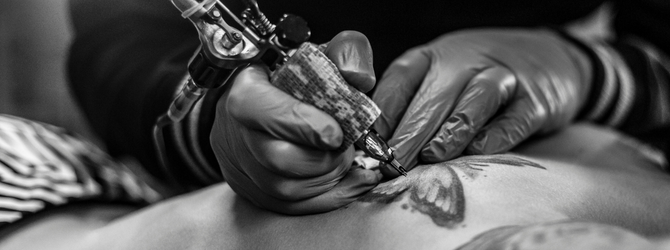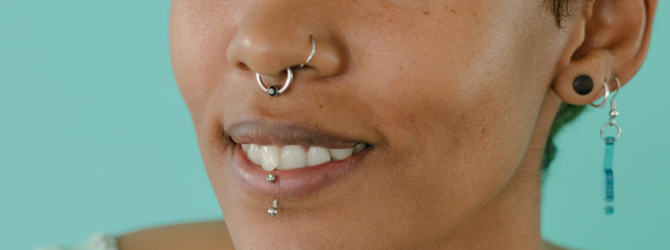Body art and hepatitis
Body Art and Hepatitis
What is body art?
Body art is art on the human body. Most common forms of body art are tattoos and body piercing, but there are also many other forms of body modification and cultural practices that change the body.
Hepatitis and body art
Body art often involves blood. Therefore it is very important that a body artist is trained in and follows infection control guidelines to prevent hepatitis transmission between customers.
Do I have to tell a body artist that I have hepatitis?
No. In Queensland you are not legally required to tell a person doing your body art about your hepatitis. Many studios will ask on their consent forms, but whether you tell them is up to you. All blood should be treated as potentially infectious, and items should be disposed of between customers, or sterilised in an autoclave.

What if the person doing the art has hepatitis?
General occupational health and safety procedures protect you as a customer, and there is generally no risk of the artist’s blood coming in contact with yours. If they injure their skin during a tattoo or piercing (whether they have hepatitis or not) they must stop what they are doing, re-glove, and get new sterile equipment before continuing. Piercers who have a blood borne virus (like HIV, hep B, or hep C) should avoid where possible doing oral and genital piercings, so that an injury to their skin does not occur inside the customer’s body.
Is it safe to get a tattoo or piercing done by a friend?
Most cases of hepatitis from body art come from ‘backyard’ tattooing and piercing. A professional tattoo or piercer is trained in infection control and has access to sterilisation techniques (e.g. autoclave) that kill the hepatitis virus. Someone operating out of their home is not able to apply this same level of hygiene, health, and safety (even if the area looks clean).
In Queensland, professional tattooists and piercers have to follow guidelines under the Infection Control for Personal Services Act 2003. Staff must hold infection control qualifications before they can legally practice tattooing or piercing. License’s for body art are issued by local government.
As well as lowering the risk for contracting hepatitis, going to a professional means you are likely to get better art. It also helps to reduce complications such as nerve damage or infections. A good body artist will also be able to provide you with information about their sterilisation procedures, and clear aftercare guidelines for your body art to prevent infection.
Can I get hepatitis by sharing piercing jewellery?
Yes. It only takes tiny traces of blood to transmit hepatitis B or C. There has been a documented case where a person got hepatitis simply by sharing jewellery with a friend. Remember not everyone will know they have the virus. So buy good quality jewellery and don’t share blood by sharing your body jewellery.

What about traditional practices?
Traditional practices usually take place in a community setting. Some cultural practices may involve blood. In some cases, a traditional healer or Elder may be highly knowledgeable in cultural and spiritual traditions, but not have had any training about blood borne viruses, such as HIV and hepatitis.
Speak with community leaders and Elders about ways to adapt ceremonies to keep the community safe. For instance, a ceremony that involves the exchange of blood could be adapted so blood is mixed together outside of the body, rather than the direct exchange of blood into the body.
Community leaders can clean the area before the ceremony and use a new blade or instrument for each person. In this way, strong community ceremonies and values can help to keep communities strong.
Can I reduce risk with other forms of body modification?
Some people do body modification such as scarification, branding, cropping, or splitting parts of the body for beauty or personal reasons. It may not always be an option to have these procedures done in a clinic or professional setting. In fact, some body modifications distinctly use sexual or ritual ceremony as part of the modification process itself.
You can still reduce the harm and risk of transmitting hepatitis. Make sure that the place where the procedure is being done is clean and sterile. If more than one person is having a procedure done, make sure plastic gloves are changed between people, and a new blade or disposable piercing rod is used for each person. Before the procedure, make sure you talk with the person about what will happen and what equipment you need to stay safe.
More information
Call the Hepatitis Queensland Infoline on 1800 437 222 for more information and support.
